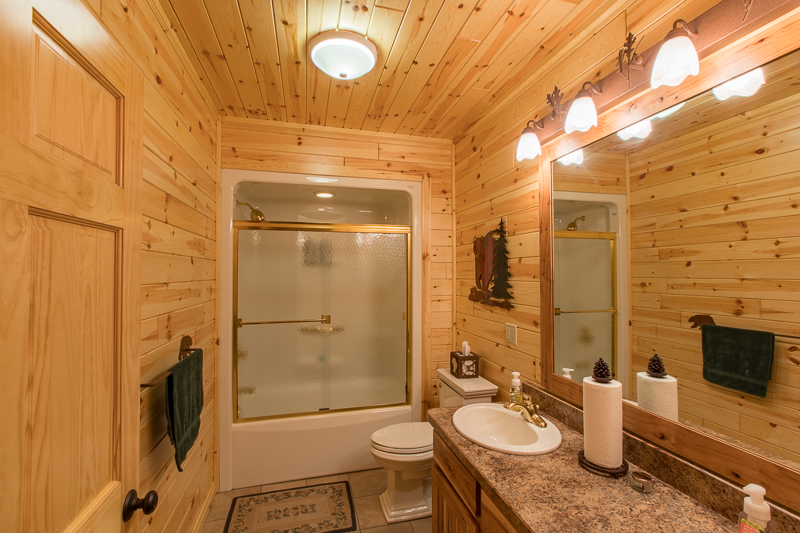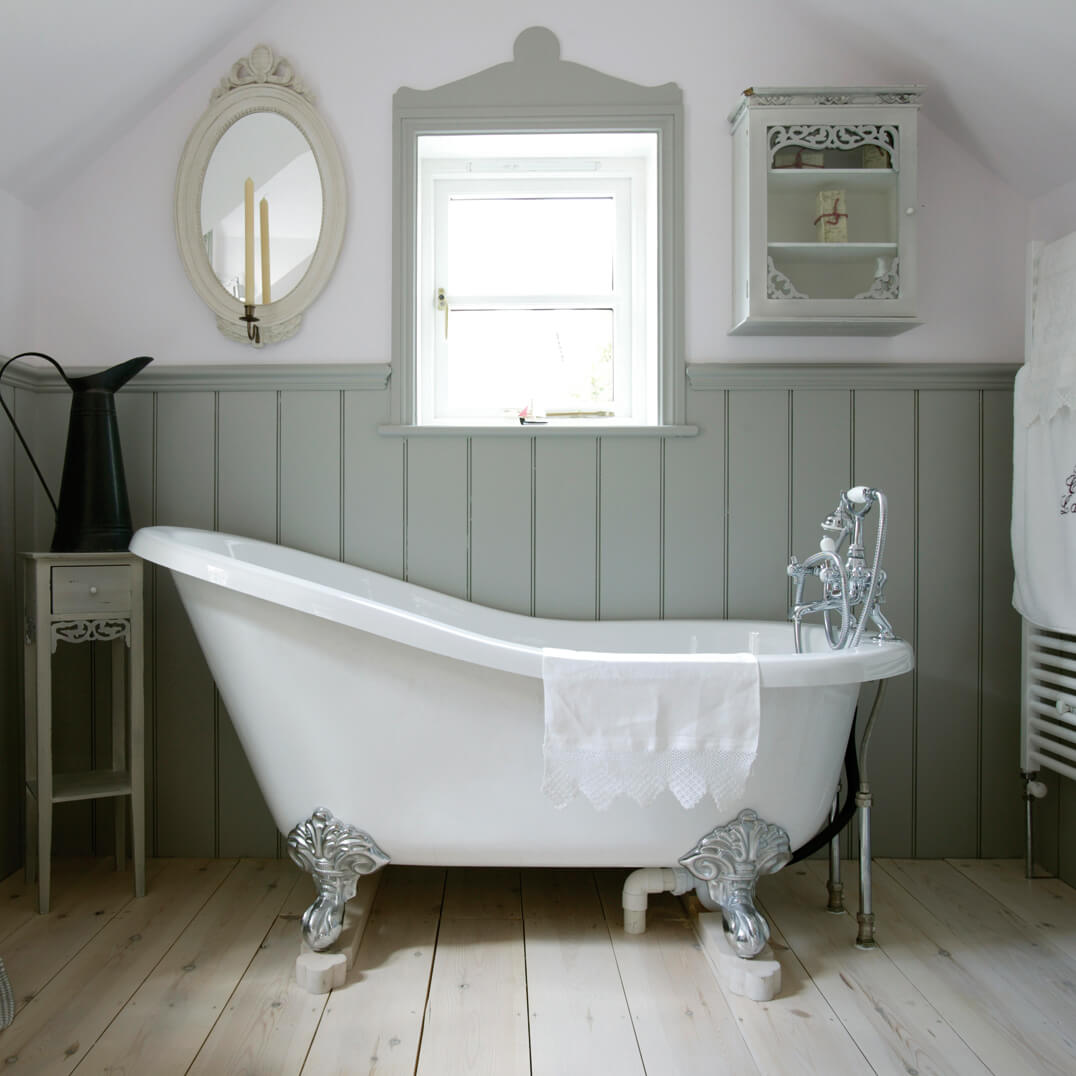Tongue and Groove Wood Paneling

Imagine stepping into a bathroom that exudes timeless elegance and warmth. Tongue and groove wood paneling, with its classic charm and natural beauty, can transform your bathroom into a sanctuary of sophistication. This traditional style, often associated with rustic cabins and vintage homes, adds a touch of sophistication to any bathroom, creating a space that feels both inviting and timeless.
Types of Wood for Bathroom Paneling
Choosing the right wood species is crucial for achieving the desired aesthetic and ensuring durability. Here are some popular options:
- Cedar: Known for its rich aroma and natural resistance to moisture, cedar is an excellent choice for bathrooms. Its warm reddish-brown hue adds a touch of rustic elegance.
- Oak: Renowned for its strength and durability, oak is a classic choice for bathroom paneling. Its grain patterns and warm tones create a sophisticated and timeless look.
- Mahogany: This luxurious wood species boasts a deep reddish-brown color and a stunning grain pattern. Mahogany adds a touch of opulence and grandeur to any bathroom.
- Walnut: With its rich brown tones and distinctive grain patterns, walnut offers a sophisticated and elegant look. It complements a variety of bathroom styles, from modern to traditional.
Benefits of Tongue and Groove Wood Paneling in Bathrooms
Beyond its aesthetic appeal, tongue and groove wood paneling offers several practical advantages for bathroom spaces:
- Durability: Wood paneling is inherently durable and can withstand the wear and tear of everyday bathroom use.
- Moisture Resistance: When properly treated with moisture-resistant finishes, wood paneling can withstand the humid environment of a bathroom.
- Ease of Maintenance: Wood paneling is relatively easy to clean and maintain. Simply wipe down with a damp cloth to remove dirt and grime.
- Sound Absorption: Wood paneling can help absorb sound, creating a more peaceful and relaxing bathroom environment.
Installation and Design Considerations

Installing tongue and groove wood paneling in a bathroom can be a great way to add warmth, texture, and style to the space. However, it’s essential to consider the unique challenges of a bathroom environment and choose the right materials and techniques for a successful project. This section explores the essential steps involved in installing tongue and groove paneling in a bathroom and offers insights into design considerations for maximizing its aesthetic appeal.
Installation Process
Installing tongue and groove wood paneling in a bathroom requires careful preparation and execution to ensure a durable and attractive finish. Here’s a step-by-step guide to help you through the process:
- Prepare the Walls: Start by ensuring your bathroom walls are clean, dry, and free of any imperfections. This may involve patching cracks, sanding uneven surfaces, and removing old wallpaper or paint.
- Install Vapor Barrier: A vapor barrier is crucial in a bathroom to prevent moisture from damaging the wood paneling. Use a high-quality polyethylene vapor barrier and ensure it’s securely attached to the walls, overlapping seams by at least 6 inches.
- Attach Furring Strips: Install furring strips directly to the wall studs, creating a framework for the paneling. This step is essential to provide a consistent surface for the paneling and create an air gap for ventilation, minimizing moisture buildup.
- Install the First Panel: Begin at a corner and attach the first panel to the furring strips using construction adhesive and finishing nails. Ensure the panel is level and plumb.
- Install Subsequent Panels: Interlock the tongue and groove joints of subsequent panels, using a rubber mallet to tap them into place. Maintain a consistent gap between each panel for expansion and contraction due to humidity changes.
- Trim and Finish: Once all the panels are installed, trim the edges and cut out openings for fixtures and doors. Finish the paneling with a sealant and paint or stain, choosing a water-resistant product suitable for bathroom environments.
Design Considerations
The design possibilities for tongue and groove wood paneling in a bathroom are endless. Here are some key considerations for creating a cohesive and stylish look:
- Bathroom Style: The style of your bathroom should guide your paneling choices. For a traditional bathroom, consider using a classic wood species like oak or cherry. For a contemporary bathroom, opt for sleek and modern paneling options, such as bamboo or walnut.
- Color and Finish: The color and finish of your paneling can significantly impact the overall feel of the bathroom. Light colors create a sense of spaciousness, while darker colors add drama and sophistication. Consider a matte finish for a natural look or a glossy finish for a more polished feel.
- Layout and Orientation: The layout and orientation of the paneling can add visual interest and impact the perceived size of the bathroom. Vertical paneling can make a room appear taller, while horizontal paneling can create a wider look.
Creative Design Features
Beyond the basic installation, tongue and groove wood paneling offers a canvas for unique design features that elevate the bathroom’s aesthetic. Here are some ideas:
- Wainscoting: Create a traditional and elegant look by using tongue and groove paneling to create wainscoting, a decorative paneling that covers the lower portion of the wall. This can be combined with a contrasting paint color or wallpaper above for added visual interest.
- Accent Walls: Highlight a specific area of the bathroom by using tongue and groove paneling to create an accent wall. This can be done in a contrasting color or wood species to draw attention to the focal point of the room.
- Decorative Moldings: Add intricate details and architectural interest to your bathroom by incorporating decorative moldings around the paneling. These moldings can be used to frame windows, doors, or create a picture frame effect around the paneling.
Maintenance and Care: Tongue And Groove Wood Panelling For Bathrooms

Keeping your tongue and groove wood paneling looking its best in a bathroom requires some TLC, but it’s not as complicated as you might think. Here’s how to keep your bathroom walls looking fresh and fabulous for years to come.
Cleaning and Maintenance
Regular cleaning is key to maintaining the beauty and longevity of your wood paneling. Here’s a step-by-step guide:
- Dust regularly: Use a soft, dry cloth or a feather duster to remove dust and debris. This prevents dirt from accumulating and causing scratches or dullness.
- Clean with a mild cleaner: For deeper cleaning, use a mild soap solution mixed with warm water. Avoid harsh chemicals or abrasive cleaners, as these can damage the finish.
- Wipe dry: After cleaning, always wipe the paneling thoroughly with a clean, dry cloth to prevent water spots or mildew growth.
Sealing and Finishing
Sealing and finishing your tongue and groove wood paneling is crucial for protecting it from moisture and stains. A properly applied sealant acts as a barrier against water, preventing warping, swelling, and mold growth.
- Choose a sealant: There are several types of sealants available, including polyurethane, varnish, and wax. Consult with a professional or research online to choose the best option for your specific needs and wood type.
- Apply the sealant: Follow the manufacturer’s instructions carefully for application. Multiple coats may be required for optimal protection.
- Re-apply as needed: The frequency of re-application depends on the sealant type and the level of moisture exposure. Generally, re-application every few years is recommended to maintain the protective barrier.
Addressing Common Issues, Tongue and groove wood panelling for bathrooms
Even with proper maintenance, you may encounter some common issues with tongue and groove wood paneling in a bathroom. Here’s how to address them:
- Water damage: If you notice water damage, such as warping or swelling, it’s important to address it promptly. Remove the affected paneling and allow it to dry completely. You may need to replace the paneling if it’s severely damaged.
- Mold growth: Mold can grow in humid environments, so it’s important to address it as soon as you notice it. Clean the affected area with a mold-killing solution and ensure adequate ventilation in the bathroom.
Tongue and groove wood panelling for bathrooms – Tongue and groove wood panelling has become a popular choice for bathrooms, adding a touch of rustic charm and warmth. While traditional bathroom design often leans towards sleek, minimalist aesthetics, incorporating wood panelling can create a unique and inviting atmosphere.
To see how this trend fits into the broader landscape of modern bathroom design, check out best modern bathrooms 2017 , where you’ll find examples of how wood panelling can be integrated into contemporary spaces. The key to successful wood panelling in a bathroom lies in selecting the right type of wood and ensuring proper moisture protection to prevent warping or damage.
Tongue and groove wood panelling adds a touch of rustic charm to bathrooms, but requires careful consideration to ensure longevity. While the panelling itself might be moisture-resistant, the surrounding areas, particularly the shower, need meticulous sealing to prevent water damage.
A well-sealed shower, as outlined in this comprehensive guide on how to seal a bathroom shower , is essential for maintaining the integrity of your bathroom’s wood panelling and creating a long-lasting, aesthetically pleasing space.